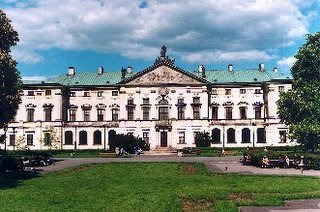Holocaust Memorial Day 2006
I am thankful to On An Overgrown Path for reminding me that Holocaust Memorial Day 2006, usually held on January 27, is being held this year, today, January 26, in order to avoid the Jewish Sabbath. Please see the superb On An Overgrown Path site for its tribute, as well as yesterday's outstanding post on The Berlin Philharmonic's Darkest Hour. This memorial day is variously described as commemorating the anniversary of the Warsaw Ghetto uprising or the liberation, by the Soviet Army, of the Auschwitz labor and death camps.
Its name, in Hebrew, is Yom Ha-Shoah. According to the Jewish Virtual Library writings compiled by the American-Israeli Cooperative Enterprise "There have been numerous attempts to compose special liturgy (text and music) for Yom Ha-Shoah. In 1988, the Reform movement published Six Days of Destruction. This book, co-authored by Elie Wiesel and Rabbi Albert Friedlander, was meant to be viewed as a "sixth scroll," a modern addition to the five scrolls that are read on specific holidays. Six narratives from Holocaust survivors are juxtaposed to the six days of creation found in Genesis."
For an excellent Map of the Warsaw Ghetto Uprising 1942, please see:
http://www.jewishvirtuallibrary.org/jsource/Holocaust/
warghetmap.html
Also please see:
http://theovergrownpath.blogspot.com/
http://www.jewishvirtuallibrary.org/jsource/Judaism/
yomhashoah.html

Warsaw, Poland's Krasinskich Palace, now the home, after long-delayed restoration, of Poland's National Library.
The Warsaw Ghetto began just behind the formal gardens of Krasinskich Palace in an area roughly circumscribed by the Krasinskich Palace, the Saski Palace (completely destroyed by the Nazis, but with plans now underway to rebuild it), and the Jewish, Catholic, and Lutheran cemetaries to the West.
Warsaw's prewar Jewish population of more than 350,000 constituted about 30 percent of the city's total population [somewhat lower than that of Odesa, Minsk, Vilnius, Lviv, Grodna, and numerous other Eastern European cities]. However, in number, the Warsaw Jewish population was the second largest in the world after that of New York City.
Source: U.S. Holocaust Memorial Museum
Photo credit: http://polish-jewish-heritage.org (Montreal, Canada). With thanks.
Its name, in Hebrew, is Yom Ha-Shoah. According to the Jewish Virtual Library writings compiled by the American-Israeli Cooperative Enterprise "There have been numerous attempts to compose special liturgy (text and music) for Yom Ha-Shoah. In 1988, the Reform movement published Six Days of Destruction. This book, co-authored by Elie Wiesel and Rabbi Albert Friedlander, was meant to be viewed as a "sixth scroll," a modern addition to the five scrolls that are read on specific holidays. Six narratives from Holocaust survivors are juxtaposed to the six days of creation found in Genesis."
For an excellent Map of the Warsaw Ghetto Uprising 1942, please see:
http://www.jewishvirtuallibrary.org/jsource/Holocaust/
warghetmap.html
Also please see:
http://theovergrownpath.blogspot.com/
http://www.jewishvirtuallibrary.org/jsource/Judaism/
yomhashoah.html

Warsaw, Poland's Krasinskich Palace, now the home, after long-delayed restoration, of Poland's National Library.
The Warsaw Ghetto began just behind the formal gardens of Krasinskich Palace in an area roughly circumscribed by the Krasinskich Palace, the Saski Palace (completely destroyed by the Nazis, but with plans now underway to rebuild it), and the Jewish, Catholic, and Lutheran cemetaries to the West.
Warsaw's prewar Jewish population of more than 350,000 constituted about 30 percent of the city's total population [somewhat lower than that of Odesa, Minsk, Vilnius, Lviv, Grodna, and numerous other Eastern European cities]. However, in number, the Warsaw Jewish population was the second largest in the world after that of New York City.
Source: U.S. Holocaust Memorial Museum
Photo credit: http://polish-jewish-heritage.org (Montreal, Canada). With thanks.


0 Comments:
Post a Comment
<< Home